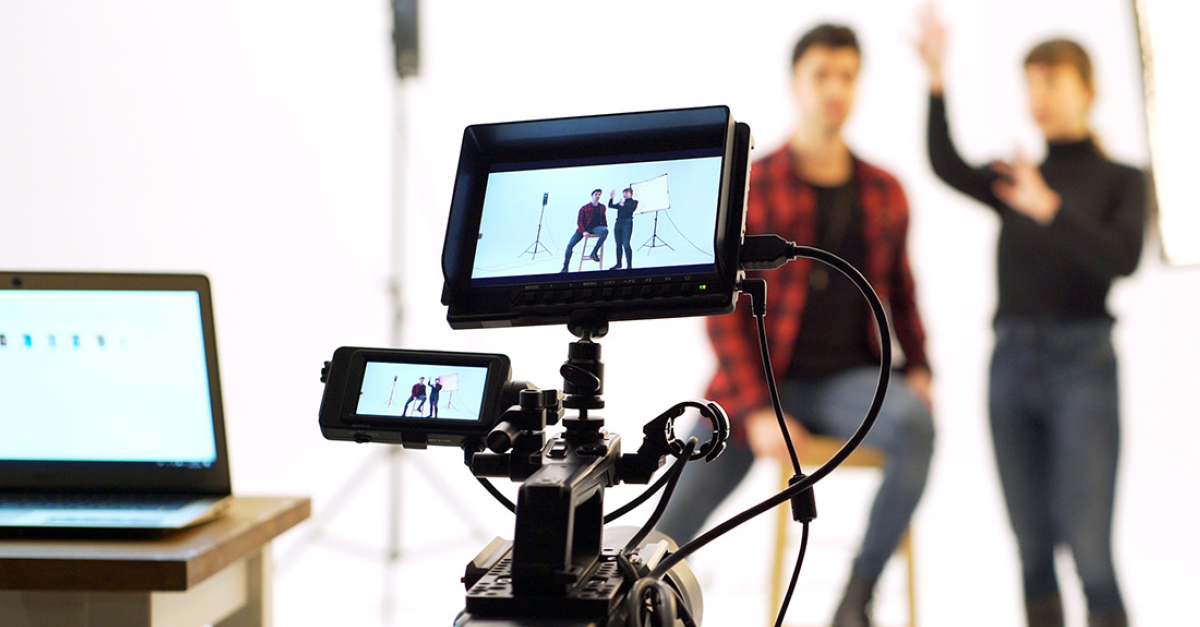You might occasionally slip by using the phrase “on tape.” Or you may never have seen a non-HD capable camera in your life.
But however long you’ve been on this earth and doing marketing, you feel the strong-and-still-growing power of video today. The brain is wired for it. New smartphones boast cameras with otherworldly capabilities. Every win by a social media platform seems to depend on how to cram more video in front of more sets of eyes.
With the proliferation of video-producing capabilities (the video equipment that used to fit into a van now fits into a pocket), it’s important to remember that not all video is equal. There are strong reasons you want to partner with an outfit that can shoot the whole nine yards in a high-end—and, yes, more expensive—professional style.
Here are three key points to keep in mind when tempted to do all video on your latest smartphone:

1. Video quality reflects brand quality
TikTok, Instagram Reels, and YouTube Shorts have been great for marketers who are able to take advantage of the short, trendy, quick-turn video medium. But no matter how popular TikTok pieces might be—and no matter how well your own in-house team might be able to execute these videos—the temptation to take popular short videos and make them the centerpiece of your brand image is not always the best idea.
I always tell clients that if you have a good product or service, you want a video that reflects your quality. You could have an amazing product or service or idea, but if your video is low quality, the viewer will probably not associate your company as high-quality.
Casey Stormes, Owner of Fresh Look Video in Grand Rapids, MI
Fresh Look has clients who use both smartphone-shot social videos as well as half-million-dollar network television commercials. And those companies often do well with both. But while the in-house, spontaneous spots can be impressive and can garner impressive returns when used right, the savviest of marketers don’t overuse the trendiest videos.
“There’s nothing wrong with that in a medium where people are watching those things,” Stormes adds. “The expectations have changed. But if you have a video on the homepage of your website and it’s a TikTok video, people are going to look at it differently.”

2. Understand the investment
Today, Stormes says a lot of marketers will invest in high-end video for storytelling and for longer-form videos that build brands and capture the essence of a company. Longtime clients who use short videos to great effect still get ample ROI from anthemic and brand-building pieces.
A quick Google search about the ROI of video marketing will bury you with statistics about how many marketers are thrilled with video ROI and why it’s the best investment you can make.
But the stats and studies aren’t as discerning as a marketer needs to be. Almost no industry media distinguish the ROI of a spot shot on a smartphone versus a professionally shot, brand-building piece that cost $30,000-plus to create.
We did, however, find a great example from Wistia of a 2018 campaign shot by Sandwich Video that simultaneously ran $1,000-, $10,000-, and $100,000-budget video commercials, for the same product, across several digital platforms. (Spoiler alert: The $10,000 spot performed the best.)
Your own budget improbably allows you to run this type of A-B-C testing. But Wistia’s thoughtfulness is what should resonate on three levels:
Low-budget video can be compelling (theirs is!) but it will not always give the best ROI.
There’s a sweet spot for how much you should spend on your video to get the look just right for your brand. (A $10,000 spot did great to advertise an app; it likely wouldn’t suffice to sell a Bentley, for example.)
There is such a thing as overkill.

3. Have a strategy
The impetus to produce loads of video content, and more quickly, may have had an adverse effect on how strategically marketers and executives approach high-end productions. While every video should have a point and a desired effect, the pre-production itself should garner more of an investment when the video budget is $10,000 and up.
“Pre-production often doesn’t get a lot of attention,” explains Stormes. “Sometimes, our job as creatives and video people is to ask the questions and figure out what the plan is.”
When working on brand-building videos, Stormes says those who are used to catering to video-hungry audiences somehow think that a more expensive video should say more, or even be longer.
In fact, your high-end video should make a point just like any other video—but a more overarching point, or a more impactful one. A company with a giant product line need not introduce every product in a single spot but should instead focus on hitting the consumer with the fact that their company is innovative and offers an array of solutions.
“The more planning you do before production starts, the better the process will be and the better the end product will be,” Stormes emphasizes.
With your key point well thought out and the right experts and experience behind the camera and in the edit bays, you’ll be looking at a better ROI even when the “I” is significant.
Experts in media
ddm can help you find the best way to a strong ROI from your company’s video projects and media placement.
